Residential Bear Attacks Are on the Rise: What You Need to Know
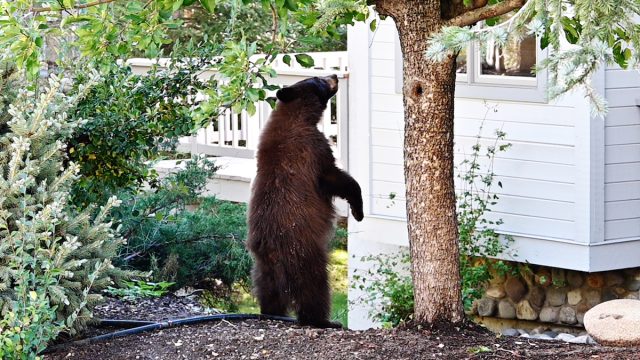
If you’re an avid camper or hiker, you’re probably aware of the risks of bear-sighting out in the wild. According to the National Park Service (NPS), it’s advisable to stay calm, quiet, and still, as well as to carry bear pepper spray with you. But if you’re not heading into the woods, you probably don’t give this a second thought. However, residential bear attacks are now on the rise across the U.S., meaning you may need to stay diligent even in your own backyard. To learn what’s attracting these menacing animals to people’s private property, keep reading.
RELATED: Tarantula Sightings in Homes Are on the Rise: “Everyone’s Freaking Out.”
Two recent bear attacks took place in residential garages.
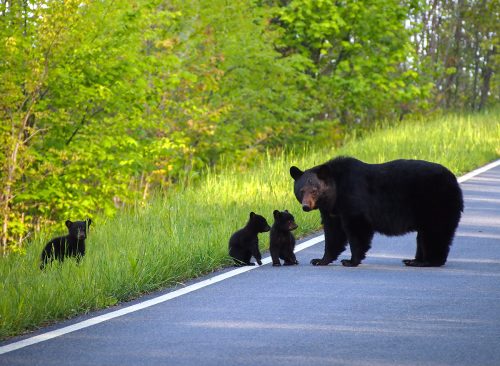
Two recent bear attacks caught homeowners off-guard in their own garages. The first took place on July 27 in Danville, Pennsylvania. CBS News Philadelphia reported that John Swartz opened his garage to turn off his outdoor hose when he found a bear going through his garbage can. He said both he and the bear were startled.
“I felt the impact of something hitting me, and it was very quick and loud,” Swartz told CBS. “My head hurt and it knocked me against the wall. Little did we know, until we received the video as to what happened outside—I didn’t realize I fell over the bear and continued down the sidewalk holding my head and continued into the house to retrieve a washcloth. I knew I had injuries and I had blood coming down.”
Swartz was taken to the hospital where the bear bites on his head were treated and he received a tetanus shot.
The next garage attack occurred on July 31 in Victor, Idaho, about 30 miles west of Grand Teton National Park in Wyoming, according to the Idaho Statesman. The homeowner was opening his garage door when a black bear attacked him, reported USA Today. He immediately called Idaho Fish and Game, who said in a statement: “The sow and cub were located in the vicinity and were lethally removed in the interest of public safety.”
RELATED: Giraffe-Sized Python Found in the U.S.—Why They’re Unstoppable.
A bear even broke into a sleeping woman’s house.
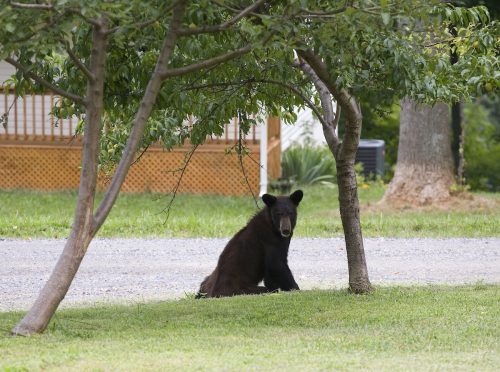
Running into a bear outside or via an open garage door is scary enough, but having one of the animals break into your home while you’re sleeping is on an entirely different level. But that’s exactly what happened to an 82-year-old Colorado woman on Aug. 11.
According to a press release from Colorado Parks and Wildlife (CPW), “a small, cinnamon-colored black bear” cub entered the home shortly after midnight. The woman was awakened by a loud crash, and when she entered her mudroom, a bear estimated to have weighed under 100 pounds lunged at her and scratched her legs.
“The bear … then scrambled frantically around the room, climbed a shelf and exited the house by tearing through an open window screen,” said the press release.
RELATED: 6 Plants That Keep Deer Out of Your Yard, According to Experts.
Most bear attacks happen because of open garbage.

According to the Kansas City Star, Swartz, the Pennsylvania man who was attacked by a bear, said he thought the animal was attracted to the garbage in his garage—and he was probably right.
“Bears have an insatiable appetite and an amazing sense of smell, and they consider anything with a scent to be ‘food,'” explains the NPS. This, of course, includes actual food, but can also be “canned goods, bottles, drinks, soaps, cosmetics, toiletries, trash, ice chests, sunscreen, bug repellant, fuel, items used for preparing or eating meals.”
To this point, following the garage attack in their state, Idaho Fish and Game told USA Today that most bear attacks “occur from July through September and are linked to careless handling of food and garbage.”
RELATED: 17-Year-Old Bitten by Rattlesnake in His Home—Where It Was Hiding.
But other food sources could also be to blame.
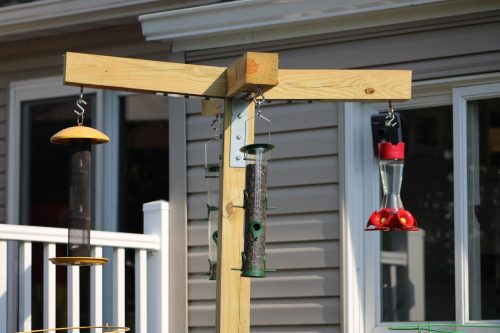
USA Today notes that other potential food sources that can attract bears to your home include bird feeders (and the seeds that birds drop on the ground near them), fruits and vegetables from gardens, exposed pet food, and barbecue grill remnants.
To stay safe, keep your trash cans sealed and indoors or in bear-resistant containers. Feed your pets inside, cover your grill when not in use, and maintain your yard, especially around fruit trees or vegetable patches. In addition, U.S. Fish and Wildlife Service says, “Instead of traditional bird feeders, set up birdhouses or birdbaths, plant native flowers, or set up hanging flower baskets for hummingbirds.”
Here’s what to look out for.
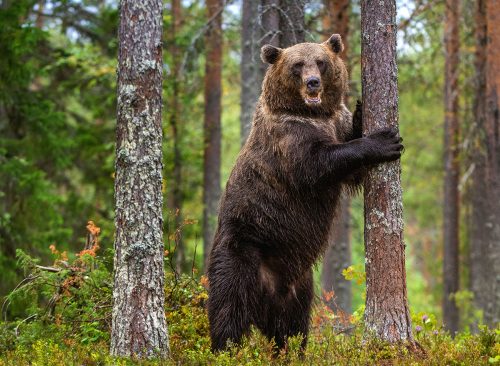
An Aug. 22 article in The New York Times recounted yet another home bear attack, this time on a 7-year-old boy in New Bedford, New York. After the boy was taken to the hospital to be treated for non-life-threatening injuries, the NYT interviewed other local residents, one of whom shared a warning sign.
Jack Kriskey, who lives nearby in Greenwich, Connecticut, said he had seen a large mound of feces in his yard the prior week. He was so shocked by its “diameter” that he posted it to Facebook, where users concurred that it was bear scat.
Other things to look out for that could signal a bear is in the area include bear tracks, which are usually only visible in soft dirt and mud; “straddled” leaves (those that are crossed or torn from bears urinating on them); piles of broken branches beneath trees that bears use as “nests”; and hair caught in the bark of trees, according to the North American Bear Center.
And remember, bear attacks on humans are actually quite rare. However, if you do encounter one of these animals, call your local authorities as soon as it’s safe to do so.
RELATED: For more up-to-date information, sign up for our daily newsletter.